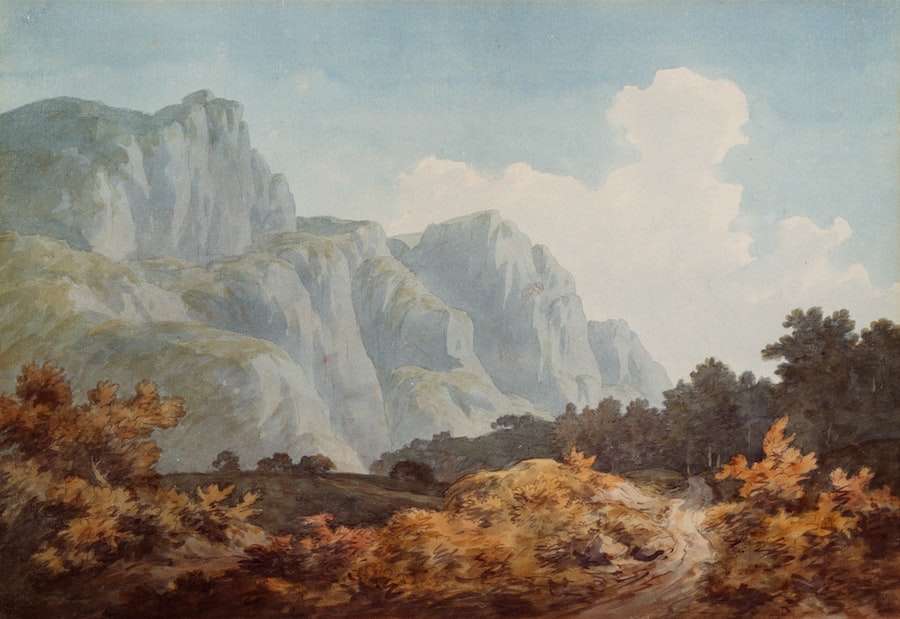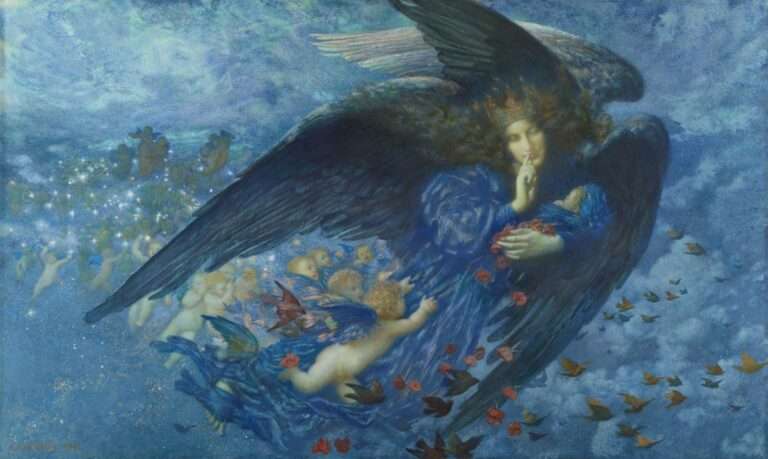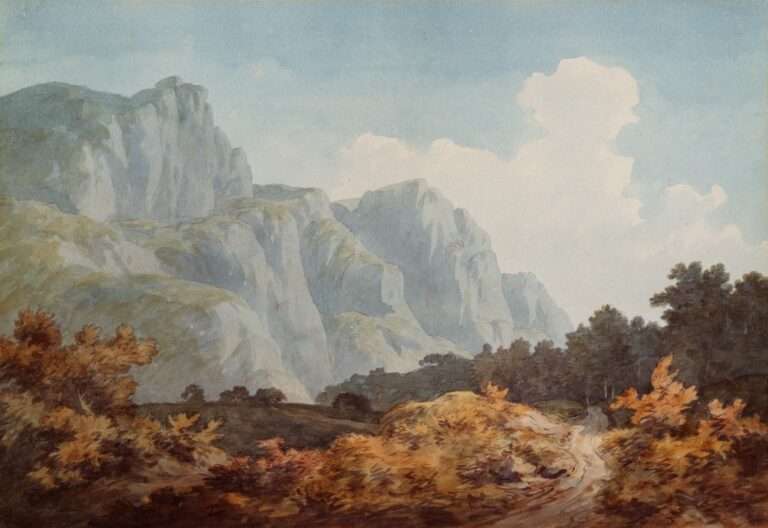The Hidden Meanings Behind Pop Art Symbolism

Pop Art Symbolism is a significant movement in the art world that emerged in the 1950s and reached its peak in the 1960s. It is characterized by its use of popular culture imagery and everyday objects, often with a sense of irony and satire. Understanding the origins and evolution of Pop Art Symbolism is crucial to fully appreciate its impact on contemporary art and society.
The Origins and Evolution of Pop Art Symbolism
The Pop Art movement originated in the United Kingdom and the United States in the 1950s as a reaction against the dominant abstract expressionism of the time. Key artists such as Richard Hamilton, Eduardo Paolozzi, and Andy Warhol played a significant role in shaping the movement. They sought to challenge traditional notions of art by incorporating elements of popular culture into their work.
Pop Art Symbolism developed as artists began to use everyday objects and brands as symbols in their artwork. These symbols were often taken from consumer culture, reflecting the rise of mass production and consumerism in post-war America. The use of these symbols allowed artists to comment on society’s obsession with material possessions and the influence of advertising.
The Role of Consumerism in Pop Art Symbolism
Consumer culture had a profound influence on Pop Art Symbolism. Artists began to incorporate everyday objects such as soup cans, Coca-Cola bottles, and comic book characters into their artwork. By elevating these mundane objects to the status of art, they challenged traditional notions of what could be considered art.
Pop Art Symbolism also critiqued consumerism by highlighting the superficiality and emptiness of material possessions. Artists such as Roy Lichtenstein used advertising techniques to create paintings that mimicked the style of comic books, drawing attention to the commercialization of art and popular culture.
The Political and Social Commentary of Pop Art Symbolism
Pop Art Symbolism was not just about consumer culture; it also addressed political and social issues of the time. Artists used their work to critique American society and culture, often highlighting the contradictions and inequalities within it.
For example, Andy Warhol’s famous series of Marilyn Monroe prints not only celebrated the iconic actress but also commented on the superficiality of celebrity culture and the commodification of fame. Similarly, Robert Rauschenberg’s “Erased de Kooning Drawing” challenged the notion of authorship and questioned the value placed on originality in art.
The Influence of Advertising on Pop Art Symbolism
Advertising played a significant role in shaping Pop Art Symbolism. Artists were influenced by the techniques and imagery used in advertising campaigns, which they incorporated into their own artwork.
Pop artists often used bold colors, repetitive patterns, and catchy slogans to create visually striking pieces that mimicked the style of advertisements. By appropriating these techniques, they critiqued the manipulative nature of advertising and its influence on consumer behavior.
The Use of Irony and Satire in Pop Art Symbolism

Irony and satire were essential elements of Pop Art Symbolism. Artists used these techniques to challenge societal norms and expose the contradictions and absurdities of contemporary culture.
For example, Claes Oldenburg’s oversized sculptures of everyday objects, such as a giant hamburger or a giant clothespin, were both humorous and thought-provoking. They highlighted the absurdity of consumer culture and questioned the value placed on material possessions.
The Relationship Between Pop Art Symbolism and Popular Culture
Pop Art Symbolism reflected and influenced popular culture. Artists incorporated popular culture references into their artwork, drawing inspiration from movies, music, television, and comic books.
By using these references, artists connected with a broader audience and challenged the elitism often associated with art. They celebrated popular culture as a legitimate form of artistic expression and critiqued its influence on society.
The Psychological Significance of Pop Art Symbolism
Pop Art Symbolism also addressed psychological themes, using color and imagery to evoke emotions and explore the human psyche.
For example, the vibrant colors used by artists such as Peter Blake and David Hockney were not only visually appealing but also conveyed a sense of energy and excitement. These artists sought to capture the spirit of the times and reflect the optimism and consumerism of post-war America.
The Gender and Identity Issues Addressed in Pop Art Symbolism
Pop Art Symbolism also addressed gender and identity issues. Artists challenged traditional gender roles and stereotypes, often using gender and identity as subjects in their artwork.
For example, artists such as Marisol Escobar and Yayoi Kusama explored themes of femininity and sexuality in their work. They challenged societal expectations and questioned the role of women in a male-dominated society.
The Global Impact of Pop Art Symbolism
Pop Art Symbolism had a significant impact on art globally. It inspired artists around the world to challenge traditional notions of art and explore new forms of expression.
In Japan, the “Superflat” movement emerged in the 1990s, influenced by Pop Art Symbolism. Artists such as Takashi Murakami incorporated elements of popular culture into their work, blurring the boundaries between high and low art.
The Legacy of Pop Art Symbolism in Contemporary Art
Pop Art Symbolism continues to influence contemporary art. Many artists today draw inspiration from the movement, incorporating elements of popular culture into their work.
For example, Jeff Koons is known for his sculptures that resemble everyday objects, such as balloon animals or stainless steel rabbits. His work reflects the influence of Pop Art Symbolism and its celebration of popular culture.
Pop Art Symbolism is a significant movement in art history that challenged traditional notions of art and explored new forms of expression. By incorporating elements of popular culture, consumerism, and advertising into their work, artists critiqued contemporary society and culture. Understanding the origins and evolution of Pop Art Symbolism is crucial to fully appreciate its impact on contemporary art and society.
If you’re interested in exploring the symbolism behind Pop Art, you might also find the article on the symbolism of the moon fascinating. The moon has long been a powerful symbol in various cultures, representing femininity, intuition, and the cyclical nature of life. To delve deeper into this topic, check out https://symbolismhub.com/what-does-the-moon-symbolize/.
FAQs
What is Pop Art Symbolism?
Pop Art Symbolism is a form of art that emerged in the 1950s and 1960s in the United States and the United Kingdom. It is characterized by the use of popular culture imagery and objects, such as comic books, advertising, and everyday objects, to create art that reflects the values and attitudes of the time.
Who were the artists associated with Pop Art Symbolism?
Some of the most famous artists associated with Pop Art Symbolism include Andy Warhol, Roy Lichtenstein, Claes Oldenburg, and James Rosenquist. These artists used a variety of techniques, including painting, sculpture, and printmaking, to create their works.
What are some of the key themes in Pop Art Symbolism?
Some of the key themes in Pop Art Symbolism include consumerism, mass media, celebrity culture, and the impact of technology on society. Pop Art Symbolism often critiques these themes by using irony, humor, and satire to comment on the excesses and contradictions of modern life.
What are some of the techniques used in Pop Art Symbolism?
Some of the techniques used in Pop Art Symbolism include the use of bright, bold colors, the repetition of images, and the use of commercial printing techniques, such as screen printing and lithography. Pop Art Symbolism also often incorporates found objects and materials, such as newspaper clippings and product packaging.
What is the legacy of Pop Art Symbolism?
Pop Art Symbolism had a significant impact on the art world and on popular culture more broadly. It challenged traditional notions of what art could be and who it was for, and it helped to blur the boundaries between high and low culture. Pop Art Symbolism also paved the way for later art movements, such as postmodernism and neo-pop.





